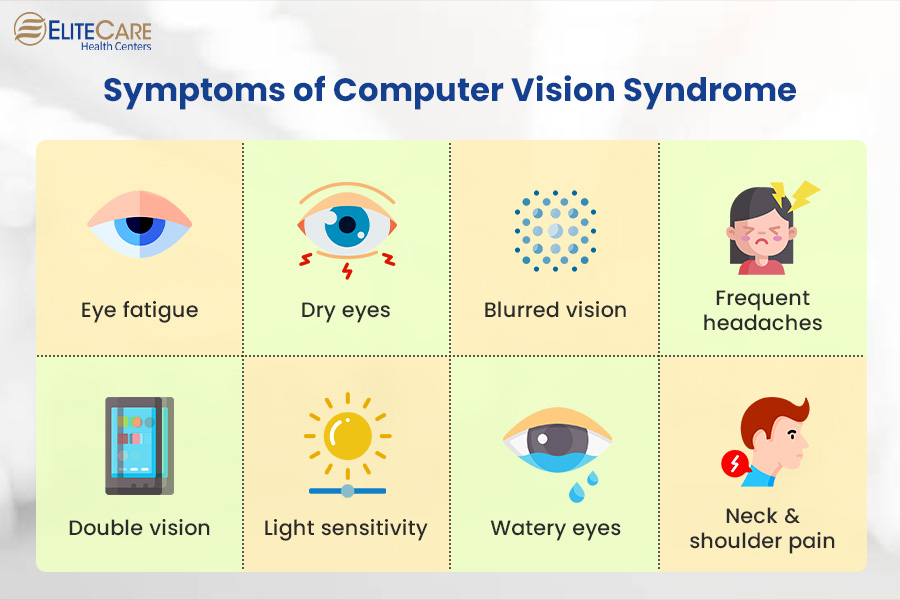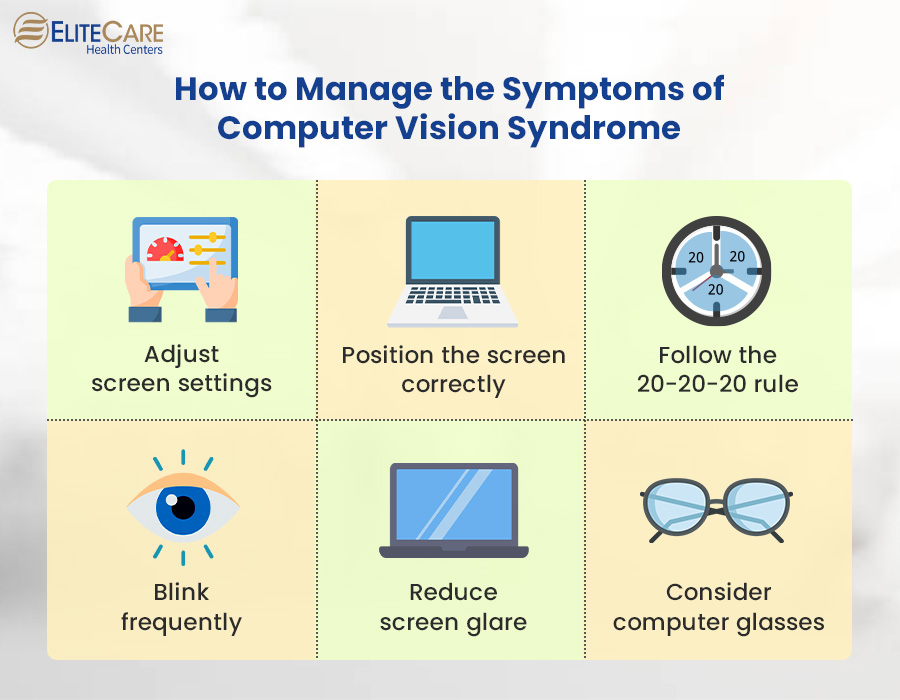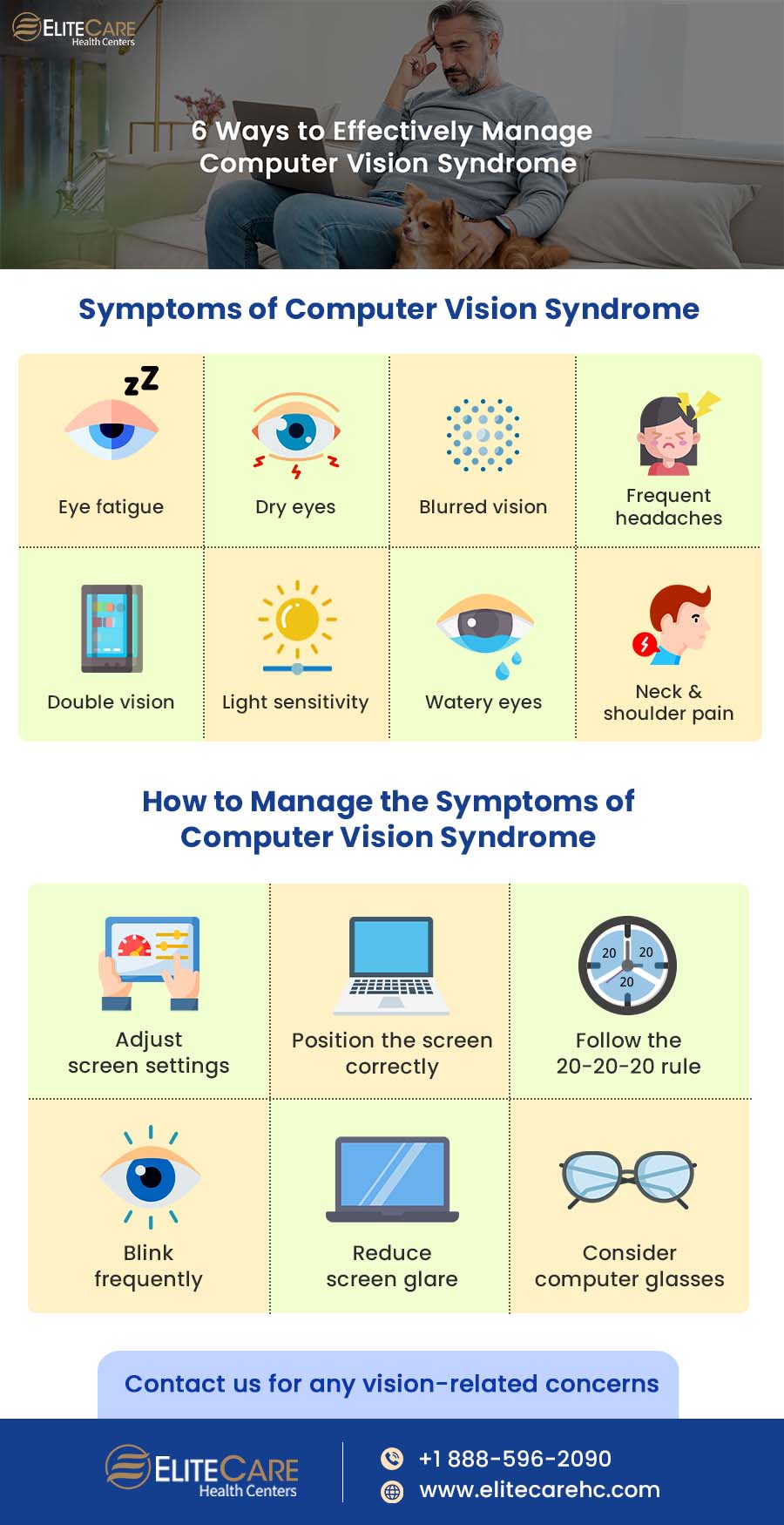
With the advent of technology, digital media has woven itself into the very fabric of our lives. From waking up to the sound of smartphones’ alarms to working on computers throughout the day and winding down with a favorite show on a tablet- screens have become an indispensable part of our daily routines. While this digital revolution has undoubtedly brought countless benefits and convenience, it has also cast a shadow on our health.
Prolonged exposure to screens has given birth to a health concern known as Computer Vision Syndrome (CVS). In this blog post, we will share insights into the intricacies of Computer Vision Syndrome, understand how it occurs, its potential complications and how a few measures like using blue light glasses can help manage this condition. Read on to learn more.
What is Computer Vision Syndrome?
Also known as Digital Eye Strain, Computer Vision Syndrome (CVS) arises from prolonged and continuous use of digital devices, such as computers, smartphones, tablets, and other electronic screens. Staring at screens requires continuous focus and eye movement, which can strain the eyes and surrounding muscles. The main factors contributing to CVS are as follows:
- Screen glare: Reflections and glare on the screen can force the eyes to work harder to maintain visibility.
- Blue light exposure: Digital screens emit blue light, which can lead to eye fatigue and disrupt sleep patterns if used before bedtime.
- Viewing distance: Being too close to the screen or holding devices at inappropriate angles can put extra strain on the eyes.
- Poor lighting: Insufficient lighting in the environment can also make it difficult for the eyes to focus properly on the screen.
While CVS is not typically considered a serious medical condition, it can cause other vision-related issues or exacerbate existing vision problems if not addressed on time.
Symptoms of Computer Vision Syndrome

1. Eye fatigue
A persistent feeling of tiredness or heaviness in the eyes, often accompanied by a sensation of burning or itching.
2. Dry eyes
Inadequate moisture on the eyes’ surface, which can result in dry, gritty, or itchy eyes.
3. Blurred vision
Objects look blurry if they are at a distance or when shifting the gaze away from the screen.
4. Headaches
Tension-type headaches around the forehead, temples, or the base of the skull.
5. Double vision
Difficulty aligning the eyes correctly, resulting in double vision or “ghosting” of images.
6. Light sensitivity
Increased sensitivity to bright light or sudden changes in lighting conditions
7. Tearing or watery eyes
Excessive tearing as the eyes attempt to compensate for dryness caused by CVS.
8. Neck and shoulder pain
Poor posture while using digital devices can strain the neck and shoulder muscles, leading to discomfort or stiffness.
Those who regularly use digital devices should visit a medical clinic and seek medical advice from a primary care physician or an eye care professional for appropriate guidance and care. It is also important to get routine physical exams done to prevent severe vision-related issues.
How to Manage the Symptoms of Computer Vision Syndrome

1. Adjust your screen
While modifying the settings of the screen, ensure that the screen’s brightness is comfortable and not too harsh on the eyes. Adjust contrast settings to make text and images easier to read without straining the eyes.
Additionally, it is also important to check the font size. Enlarge the font size if necessary to reduce eye strain while reading. Choose clear and legible font types that don’t require excessive squinting.
2. Position the screen correctly
Keeping the monitor in the right place will help ensure that the eyes have minimal exposure to the blue light emitted from the screen. Follow these instructions to set up a desk or workstation:
- Place the monitor at an arm’s length away from the eyes. The optimal distance between the eyes and the screen should be approximately 20 inches or 50 centimeters.
- Position the top of your monitor at or slightly below eye level to prevent straining the eyes.
- Tilt the screen slightly backward (10-20 degrees) to minimize reflection and glare. Ensure that the monitor is directly in front of you, not angled to the side.
3. Follow the 20-20-20 rule
While working on a digital device or looking at a screen, set reminders every 20 minutes to take a break. During each break, look away from the screen and focus on an object at least 20 feet away. This exercise can help relax eye muscles, lower eye strain, and reduce fatigue.
4. Blink frequently
Individuals should remind themselves to blink consciously and regularly, especially during intense screen usage. Blinking keeps the eyes moisturized and prevents dryness.
5. Reduce screen glare
Position the computer screen perpendicular to windows to minimize glare from natural light. Use curtains or blinds to control incoming light if needed. Apply anti-glare screen protectors on the device to reduce reflection and glare.
6. Consider blue light glasses
Visit an eye care specialist for regular eye check-ups and discuss the possibility of prescription computer glasses. Blue light glasses are prescribed by healthcare professionals to minimize exposure to harmful blue light emitted by screens, reducing eye strain and aiding better sleep.
The Bottom Line






